Monuments on Indian Currency notes
In this post, I will be looking at the places or monuments on Indian Currency notes of different denominations(Except Rs.2000 note as it will be taken out of circulation after Sept 2023). These currency notes were introduced from 2016 after demonetization. Interestingly all the monuments are declared as UNESCO World Heritage sites and are from different parts of the country i.e North(Red Fort), East(Sun Temple, Konark), South(Hampi), West(Rani ki Vav and Ellora Caves) and Central(Sanchi Stupa) India. Have been to 4 out of these 6 places as of today. All the currency notes have Mahatma Gandhi image on front side and the monuments on back side.
Monument on 500 rupee note – Issued in 2016 – It has image of Red fort on back side.
Red fort: Red fort in Delhi was built by the fifth Mughal Emperor, Shah Jahan in the year 1638 as the palace in his new capital of Shahjahanabad(Delhi). It is also called Lal Qila and was designed by Architect Ustad Ahmad Lahori and the main entrance gate, Lahori Gate is named after him.
The Indian national flag is hoisted here by the Prime on Indian Independence day, August 15th, to show that this site over which the British colonial government had sought to inscribe its power and might was symbolically reclaimed for the Indian people. It is spread across an area of 255 acres and the circumference of the fort is around 2.41 kms. This was declared a UNESCO World Heritage Monument in the year 2007.
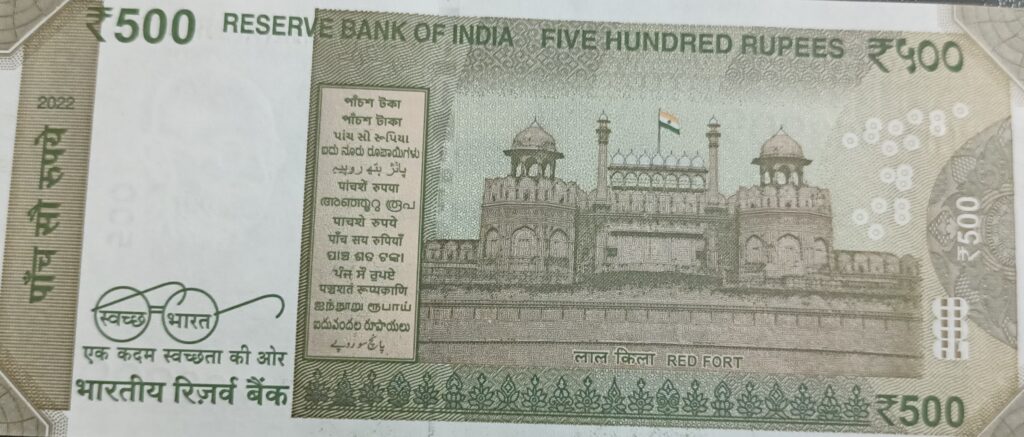

Monument on 200 rupee note – Issued in 2017 – It has image of Sanchi Stupa on back side.
Sanchi Stupa: It was built by Emperor Ashoka in 3rd century BCE and is located in Madhya Pradesh, around 40 kms from it’s capital city of Bhopal. He built a pillar and the brick stupa which was later enlarged and during the Satavahana regime, the 4 gateways were built around the Stupa in first century BCE. Two more stupas(Stupa 2 and 3) and many monasteries(around 40) were also built later behind the stupa. This was declared a UNESCO World Heritage Monument in the year 1989.
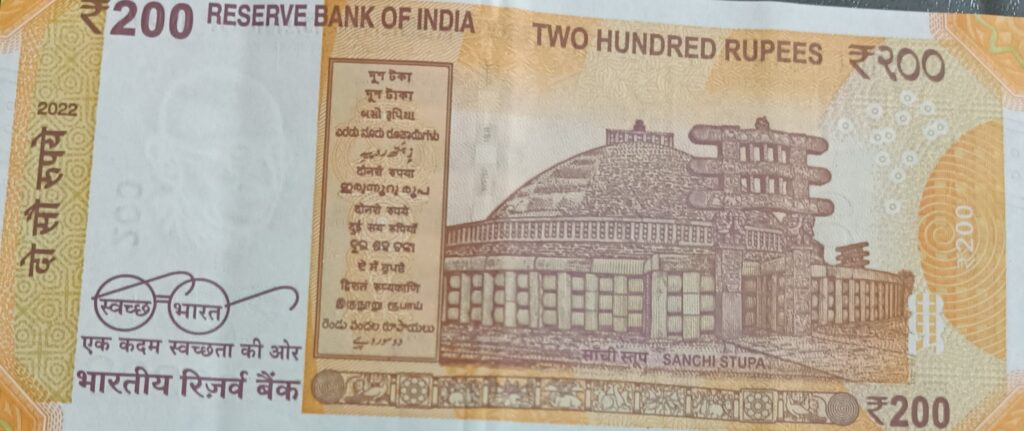
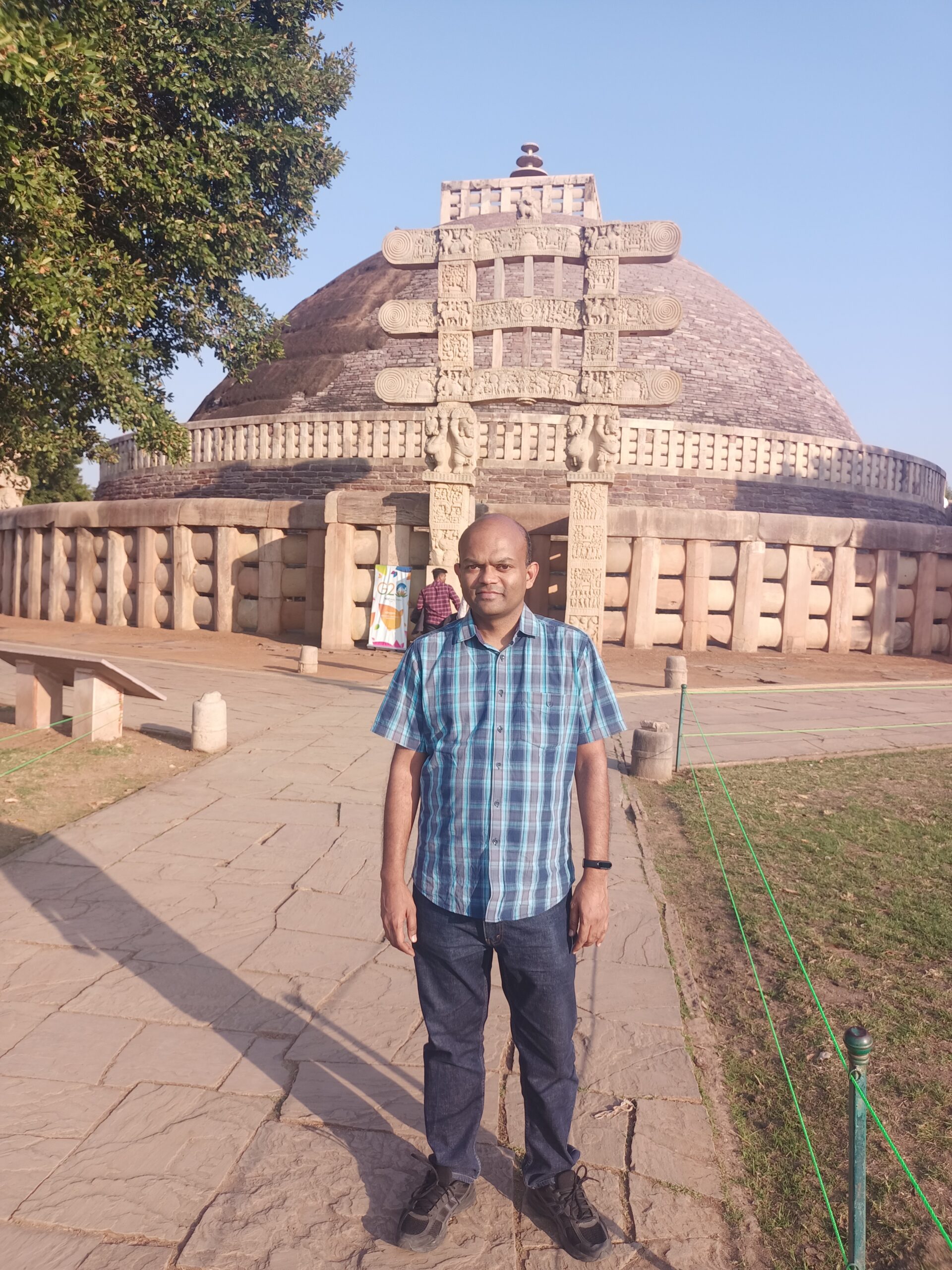
Monument on 100 rupee note – Issued in 2018 – It has image Rani Ki Vav on back side.
Rani ki Vav : Rani ki Vav or the Queen’s stepwell, is located on the banks of the River Saraswati at Patan in Gujarat State. It was initially built as a memorial to a king in 11th century CE by Rani Udayamati of the Chaulukya Dynasty and designed as an inverted temple highlighting the sanctity of water. This water management system has seven levels of stairs and architectural panels. This was declared a UNESCO World Heritage Monument in the year 2014.
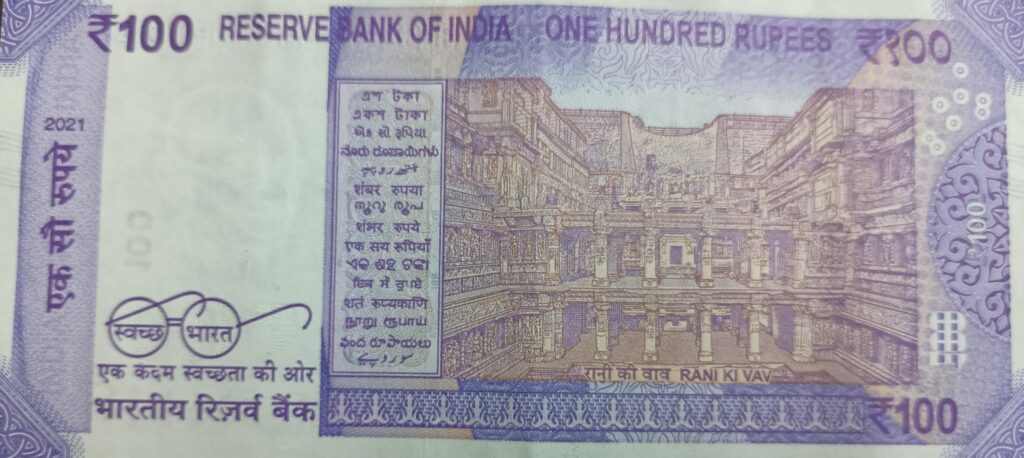
Monument on 50 rupee note– Issued in 2017 – It has image Hampi on back side.
Hampi : The Grand site of Hampi was the last capital of great Hindu Kingdom of Vijayanagar. It is located in the Bellary District of Karnataka state. Dravidian temples and palaces were built between the 14th and 16th centuries. It was later conquered by the Deccan Muslims in 1565 and destroyed over a period of six months before being abandoned. What remain now are the remnants of the past. The Vijaya Vitthala temple complex houses the Stone Chariot. This was declared a UNESCO World Heritage Monument in the year 1986.
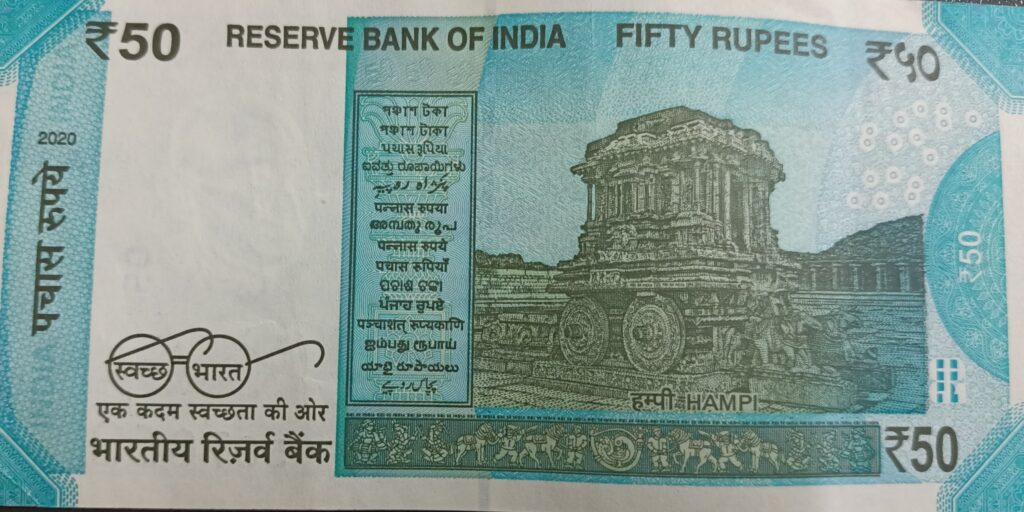
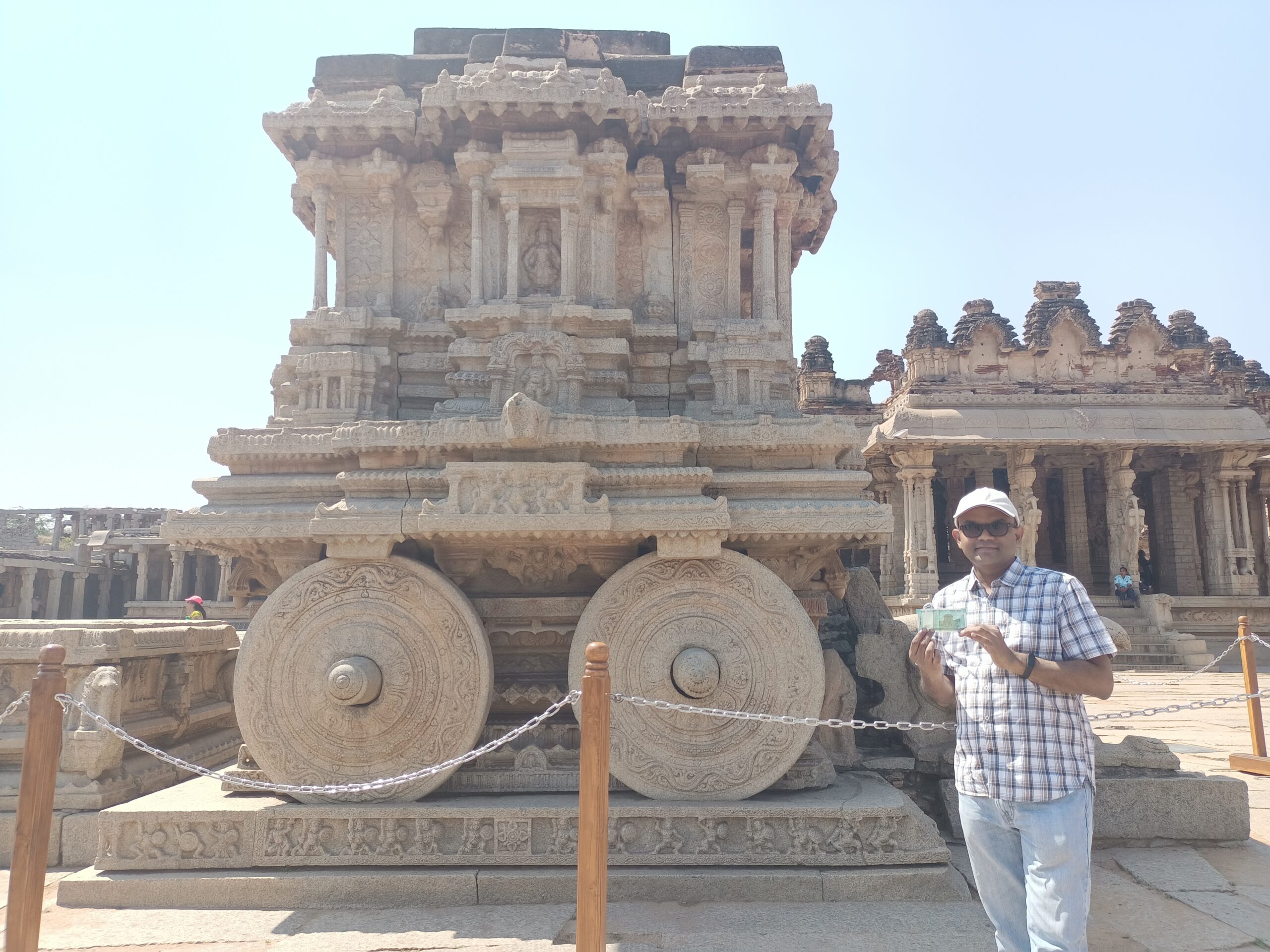
Monument on 20 rupee note – Issued in 2019 – It has image Ellora Caves on the back side.
Ellora Caves : Located near Aurangabad in Maharastra state, Ellora caves were built between 6th century and 12th century CE. There are 34 caves out of which 1 to 12 reflect Buddhism, 13 to 29 reflect Hinduism including the famous Kailasa temple(cave 16) which is the largest monolithic temple carved out of a single rock and 30 to 34 reflect Jainism. This was declared a UNESCO World Heritage Monument in the year 1983.
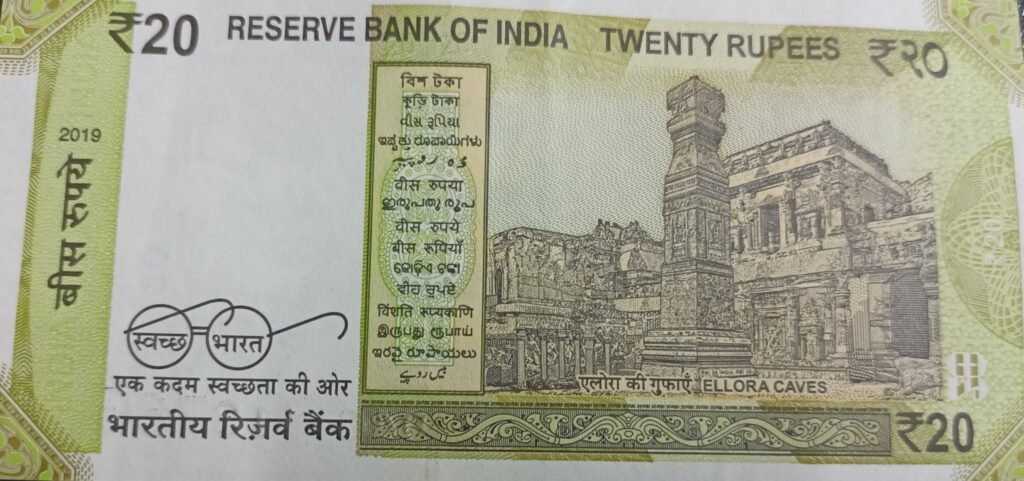
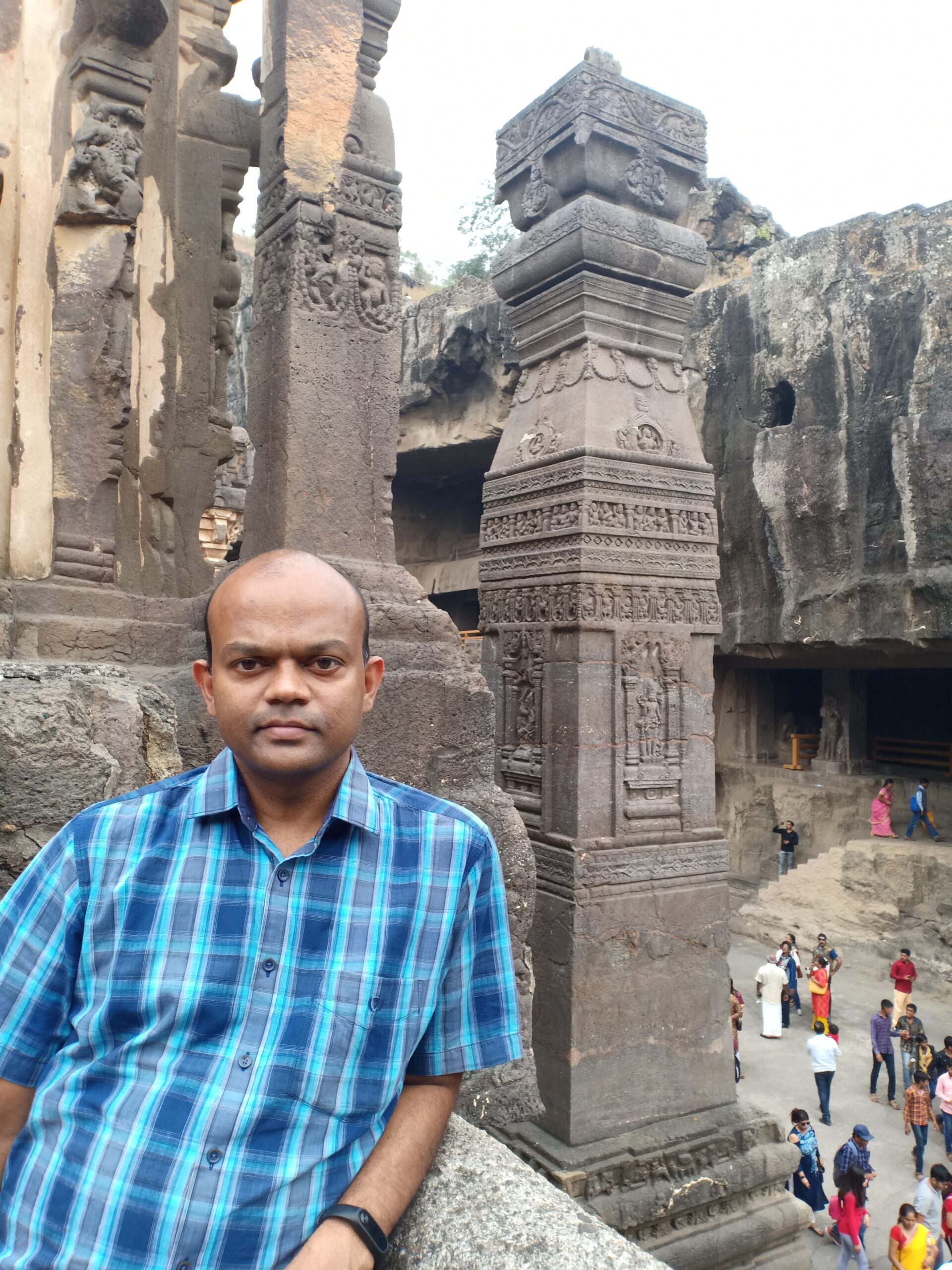
Monument on 10 rupee note – Issued in 2017 – It has image of Konark Sun Temple on the back side.
Sun Temple, Konark : Located in Konark on the shores of Bay of Bengal in the state of Odisha, the Sun temple was built in 13th century during the reign of Narasimha Deva I. The temple represents the chariot of Sun god with 24 carved wheels, each of diameter 3 m drawn by 7 horses. This was declared a UNESCO World Heritage Monument in the year 1984.
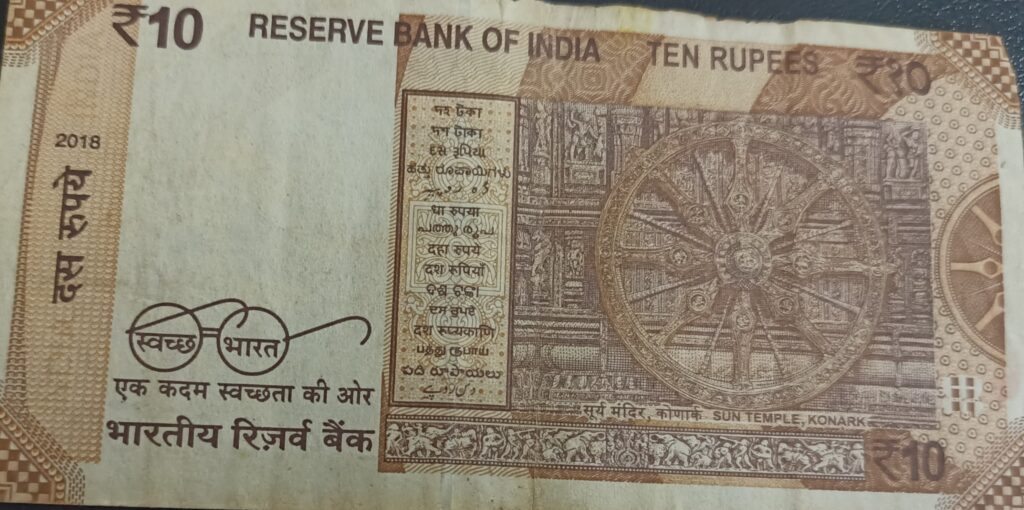
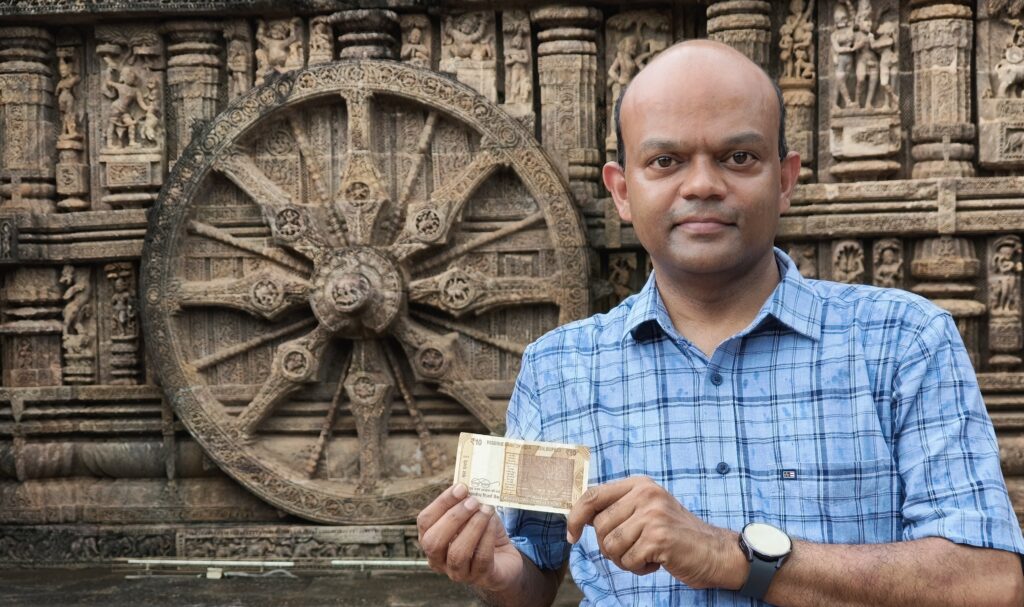
You can check out the other places from here.